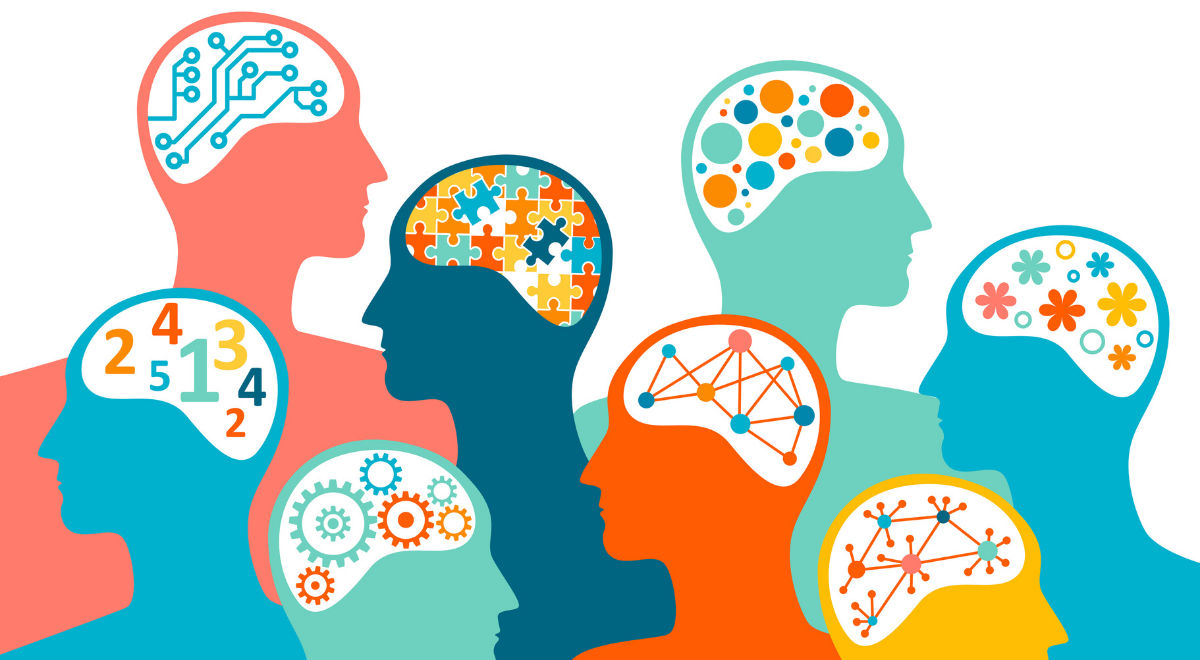Outschool welcomes all learners, including those with a variety of abilities and identities. As an educator, you have the opportunity to provide meaningful support to every learner who enters your classroom. For learners who are neurodivergent, you can take intentional steps to support their engagement and participation in class.
Neurodiversity is the understanding that people interact with others and their environment in individual ways based on neurological differences. It includes the view that differences among people are an asset instead of a deficit. Learners who are neurodivergent may include those who are on the autism spectrum or have attention deficit hyperactivity disorder (ADHD), dyslexia, hyperlexia, obsessive-compulsive disorder (OCD), and other neurological differences.
We talked to four educators on Outschool who teach learners who are neurodivergent and who have backgrounds that have prepared them for teaching learners with unique needs. They shared their thoughts on how educators can better support these learners in their virtual classrooms.

Janie Walton currently teaches social skills to autistic learners. She has a master’s degree in elementary education as well as a teaching certificate in Alabama.

Daniel Fontana currently specializes in sports-themed classes with focuses that range from math to critical thinking and social skills. He has a master’s degree in elementary teaching and special education and is certified to teach both K-8 and special education (K-12).

Mandy Post teaches themed classes (often based on popular characters) and book clubs, both of which have the underlying goal of reducing stress and anxiety. She has a master’s degree in clinical psychology and has worked with youth in therapeutic settings.

Jenn Roney offers classes focusing on social and emotional skills and wellness. She has a master’s degree in social work and has extensive experience working with students with unique learning needs.
While each educator has their own specialty areas and unique styles – some based on the specific learners they teach – they shared some similar recommendations to best support learners who are neurodiverse.
Accommodate different learning styles
At the top of everyone’s list was encouraging different ways of engagement and participation based on learner needs.
One example is giving learners the option to use the chat to communicate. A couple of educators described how some learners would send them a private message in chat that they weren’t ready to say out loud to the group. “Sometimes I’ll have kids who want to say something first to me to make sure it sounds okay before they share it with their peers,” Jenn Roney said.
Or educators may offer the chat as an alternative way to communicate with the group instead of asking learners to raise their hand to speak. “Some kids are much more comfortable typing their responses,” said Daniel Fontana, “and they have the option to send it to the group because I’ll keep the chat on ‘public’ in certain classes.”
Hand gestures are another way that educators offer learners alternative ways to interact. Janie Walton said she may model “thumbs up” or “thumbs down” when she asks learners – particularly those who are less verbal – how they are doing that day.
It can be helpful to keep in mind that some learners may be comfortable with either verbal or non-verbal communication, and this can even change day to day. As an educator, you can support them by encouraging whichever form of communication feels right for them.
- Using a simple background online to reduce sensory overload
- Allowing learners to take breaks if needed
- Providing movement activities if learners need physical activity
- Allowing learners to appropriately self-soothe or self-stimulate (it may be appropriate to ask learners to mute themselves to prevent distractions to other learners)
- Turning chat off for group sharing if it becomes distracting
Communicate with parents
All four educators talked about communicating with parents as important to understanding what supports would best help a child to participate and learn.
Janie Walton indicated that she often includes a message to parents in her class descriptions inviting them to share information about any special need a learner has so that she can accommodate that in class. If parents indicate that a child has a particular learning need, reaching out to them through the Outschool platform to find out more is a regular practice for these educators.
Jenn Roney said that she also contacts parents if she notices that a learner appears to be struggling in class. She describes what she observes without any judgment or opinion: “I noticed that John did not answer any questions today. He was spinning in his chair, and I wanted to check in with you if you have suggestions or strategies that might help him feel more comfortable participating in class.”
She added that she would let the parent know that she enjoys having the learner in class and wants to support him and help him engage in the class.
Welcome and interact with each learner
While welcoming each learner is important in every Outschool class, these educators stressed that a friendly environment can be particularly important for learners who are neurodiverse. These learners may be anxious due to negative experiences in other educational settings or may need more support to interact and participate in class.
All four educators said they make sure to welcome learners by greeting each one and by saying each person’s name at the start of class.
Daniel Fontana described his approach when learners enter his sports classes:
“Within the first couple minutes of class, I say their name and have some interaction with them, whether it’s, ‘Who’s your favorite sports team?’ or ‘Oh, do you play sports?’”
Interacting with learners early on in the class sets them up for successful interaction throughout the lesson, he said, because they’ve already “dipped their foot in the pool.”
Mandy Post has a similar way she starts her class: “We always begin with introductions. In our ‘racecar brain’ class (geared to learners with ADHD) we go around and share what our favorite thing to do is. It gets them engaged and it gives me an idea of their personality.”
Keep in mind that some autistic learners have a “special interest” — coins, music, video games, or one of many other topics — that they enjoy talking about and may not have the ability to easily stop sharing about. Understanding this and having a plan to carefully manage transitions to new activities is important so that those learners don’t feel “shut down.”
Set expectations
Several educators emphasized that sharing clear expectations helps learners understand what behavior they should have during class and decreases the need to correct behavior. This includes providing directions and examples so learners know what to do and what the behavior looks like. Learners who are neurodiverse may need instructions to be as unambiguous, specific, and direct as possible.
“We don’t even realize sometimes the things we don’t say or the messages that we’re giving students that we’re kind of expecting them to pick up, but neurodiverse kids might not.”
– Jenn Roney
And some educators repeat the same expectations every class.
“If I have a student for 20 lessons in a row, they will hear those every single time,” Janie Walton said. She has six: Participate in the class discussion, listen when others are talking, raise your hand if you have something to say, respect others, keep your camera on if possible (and mute your microphone if you are not talking and there is background noise), and “let’s have fun!”
Like all the educators interviewed, she indicated that she makes adjustments as needed, helping each learner reach individual goals.
Jenn Roney also shares with learners her expectation that everyone in the classroom is respectful, and she encourages them to advocate for what they need.
“A lot of these kids with learning differences are coming in with negative past experiences. So if there is anything that is making them uncomfortable, or if there is anything I can do to make class a better experience for them, (I let them know) it is okay to tell me or have their grownup tell me.”
Celebrate strengths
All learners have strengths and weaknesses – these aren’t unique to learners who are neurodiverse.
“It’s very easy to put kids in categories,” said Jenn Roney, “then focus on the deficit areas… as opposed to focusing on an individual and their strengths.”
Seeing each learner as an individual and embracing their differences is key. Some of these educators give learners who have become very knowledgeable and passionate about particular subjects time to talk about their “special interest” at the start of class or those who tend to fidget some time to wiggle and talk about ways that behavior benefits them. The latter may be considered “stimming,” or repetitive movements or noises that serve different purposes, such as self-stimulation or self-soothing, depending on the person.
“What I’ve enjoyed most about this time on Outschool is just being able to meet kids where they are at,” said Mandy Post. “And be non-judgmental and celebrate their differences.”

